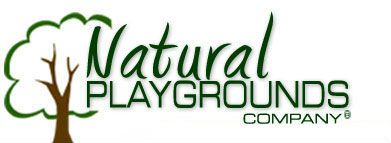By accepting you will be accessing a service provided by a third-party external to https://www.naturalplaygrounds.com/
Create a fabulous sand play area on your Natural Playground
Sand is one of the few manipulatives that truly allows children to explore their imaginations. Unfortunately, in most play settings, sand is treated as just one more controlled play item: it’s kept in containers until it’s used in a plastic “sand table.”
The beauty of sand, is that it’s a material found almost everywhere on earth, so it’s unsettling that children see it stored in table or in a bucket on a shelf along with crayons and toys, totally disconnected from its natural setting. Not much of it fits in a sand table, and there’s no room to build anything complex, such as road systems or mountains. Children stand at the table, rather than play on their hands and knees, and many are required to wear aprons so they don’t get dirty.
We’re pretty certain that these are not good lessons for children.
Children also find sand boxes limiting. Whenever we’ve seen a sandbox adjacent to a sand pile, children are never in the confined box. They’re always in the free-form area, playing with abandonment.
When sand is where it’s supposed to be, children love playing in it. They can dig to China, find “fossils,” hunt for gems, make roadways, build mountains, create waterways, build sand castles, dig tunnels, and discover hidden treasures. If they mix sand with water, they can make shapes of almost any kind.
But look at all the others things they learn on their own, without a teacher, just by playing in a pile of sand!
-
Sand has what is called a “slump” characteristic, so when poured, sand will form a mound, the slopes of which vary in angle depending on the size of its granules and the dampness of the sand.
-
On a sunny day, the surface of the sand will be hot, but when children dig down, they find coolness.
-
When sand is wet, it changes color. And when wet sand gets very cold, it freezes solid.
-
When sand is wet, it can be shaped, and the finer the sand, the more intricate the shapes can be.
-
When water evaporates from a structure made with sand, it collapses.
-
When too much water is added, structures don’t hold their shape.
-
Sand is comprised of many tiny particles of various sizes and colors which children can sort and collect.
-
Sand, like other fine materials, slips through the small cracks in their hands, so children learn to clasp them together more tightly when trying to contain fine materials.
-
Sand is portable, so children find many ways to move it by pushing it, pulling it, putting it in and pouring it out of containers, carrying it by hand, shoveling it, moving it by dump truck, and pouring it out of funnels.
-
If children try building a bridge using sand, they learn that it won’t support itself and that they need something with more “structural integrity” like a stick or a piece of wood.
-
Sand can be portioned and divided, and added and subtracted. More is heavier, less is lighter, and to get more, you take more, and keep adding until you have just the right amount, a decision in itself.
-
Sand can bury or “hide” things, like treasures, which can be found later.
-
Sand particles get into everything: pockets, fingernails, sneakers, hair, lunchboxes, and classrooms. Sand makes a floor very slippery.
-
But in the wintertime, sand on ice makes it less slippery.
-
When it rains, rivulets can move sand, and make beautiful, smooth patterns.
-
But if children try making a sand dam, they soon realize it won’t hold water.
-
Dig deep enough on a beach, and children find water; deeper still, they’ll discover that their holes collapse.
-
Children learn to control their bodies in different ways when they’re kneeling on the sand, sitting and twisting, or turning and reaching.
-
When children are barefoot, their feet and bodies have to adjust in surprising ways to accommodate the ever-changing surface of sand.
If our firm were designing a Natural Playground for a childcare center, school, or community, this list would comprise the “design parameters” for a free-form, sand play area. Similar parameters would be developed for every other aspect of a Natural Playground, because they’re the ultimate outdoor classrooms that should challenge and inspire children while teaching them lessons about themselves and about nature.

